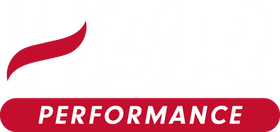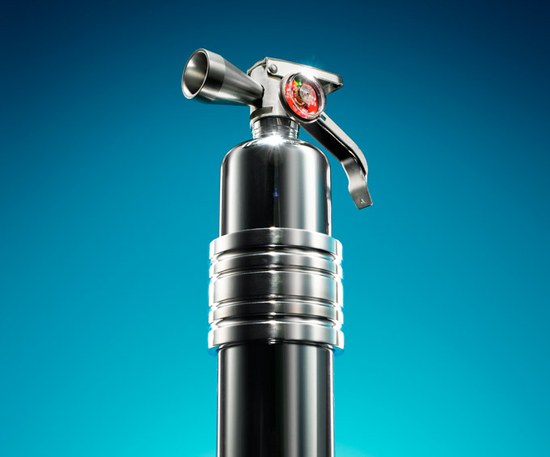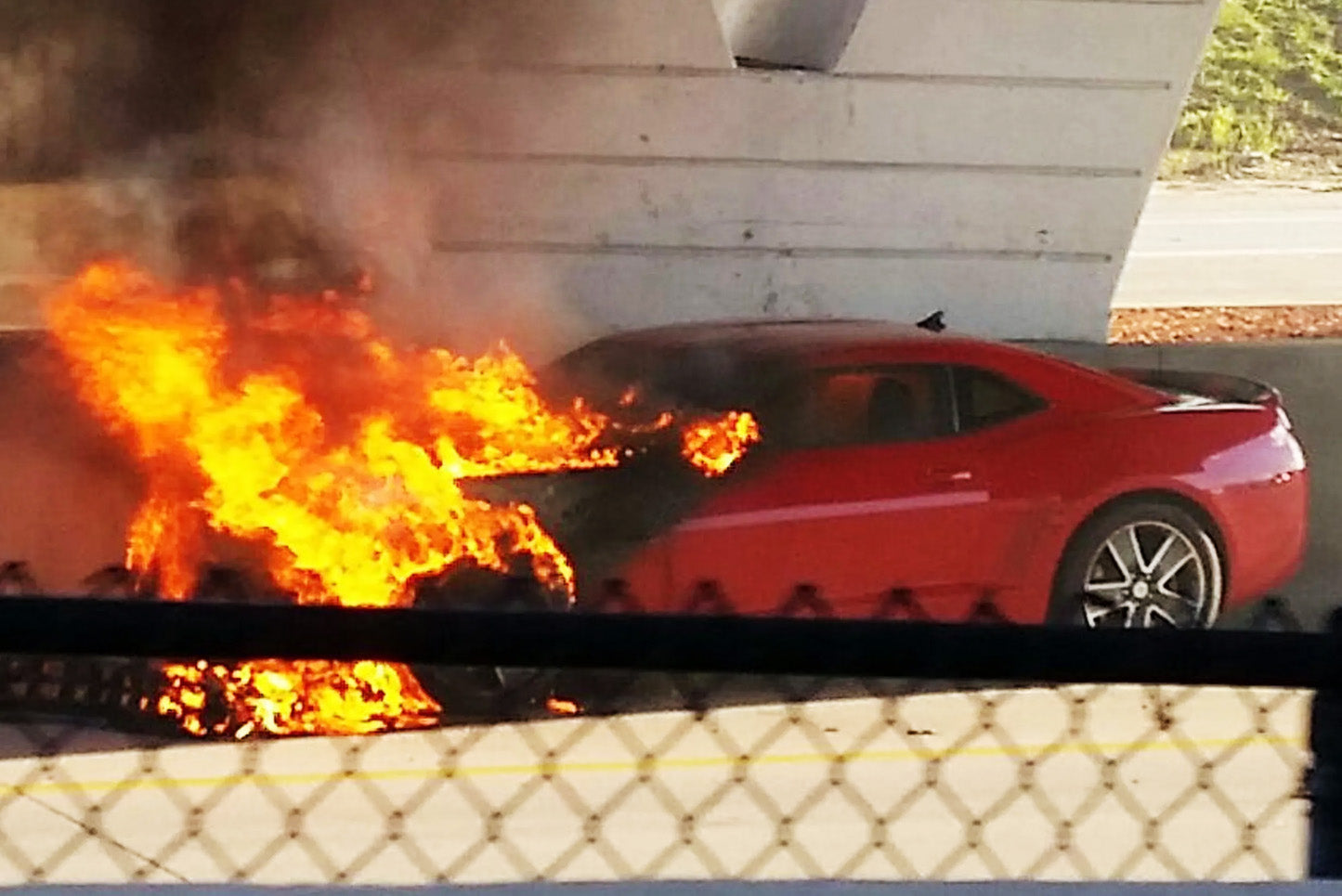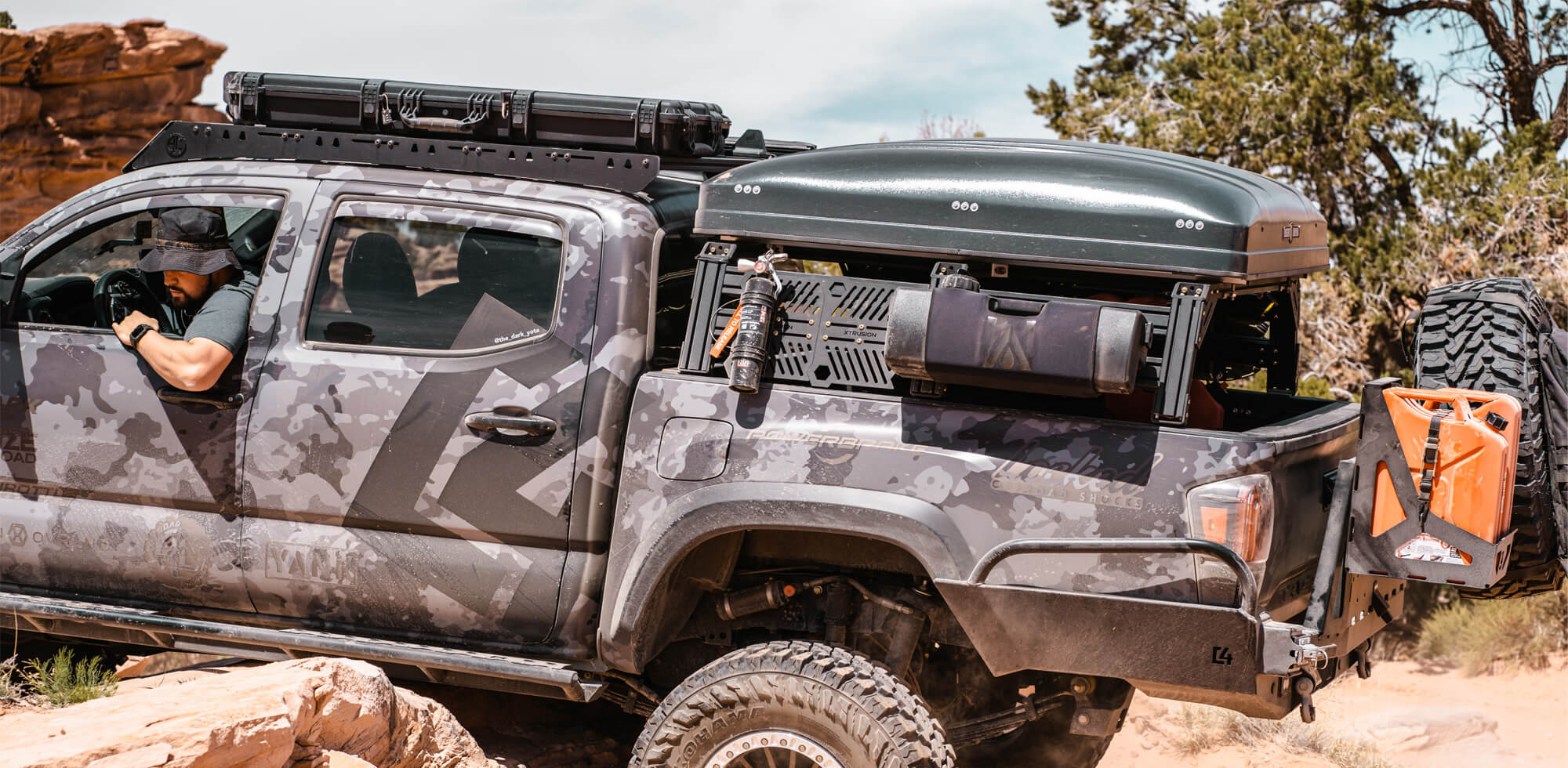They Call Me “The Fireman”
Bronco Driver Magazine/Mike "Greaseball" Dyster | Feb 1, 2010
Well..not really, but during my career in the car business I have had a few of them caught fire. The first two were drag race cars. Fire came about as a result of too much fuel, too much timing and being in too big a hurry. Tried to fire engine and it fired all right... into a ball of flame.
As the rules required we had fire equipment at our side and both cars were saved.
The next was a couple of pickup trucks, fuel leaks, bad wiring and the same thing. Had a fire extinguisher on board and saved both trucks.
But the one that really had me worried happened to my Bronk in Moab of all places, out in the middle of nowhere, by ourselves. I was still using a carburetor before the jump to fuel injection and old fuel systems are fire prone. Off roading just enhances the possibility of a major malfunction.
Extremely hot weather, dry conditions, and gasoline vapors in the carb ignited due to a slight backfire in the intake and the result was a rig on fire. The oil soaked type air cleaner burst into a ball of flame melting the carb down into the intake and into the cylinders before I could get the rig stopped, grab the fire equipment, and get the hood open. It was a disaster in the making and it almost was just that. We both got out of the rig, but the prospect of watching your rig go down in front of you was not an option. Again, I had a fire extinguisher on board. Only one, which was barely enough (I have two of them now). We saved the rig, lost a new engine, and the clean up was a disaster. But we saved the rig thanks to a lone fire extinguisher and my crew chief wife.
If you have ever experienced something like a rig on fire it is amazing how slow you must move to do everything that needs to be done to get the situation under control. Although you are moving at light speed it feels like you are in slow motion in times of an emer gency. It all becomes surreal and animated possibly so that we can put it on file for future reference. What ever it is... it’s downright traumatic. One time is all it takes to make a lasting impression.

The extinguisher I had on board during this event, was a class BC type which is what is called for in automotive applications. This type uses a dry yellow suppressant corrosive powder that works very well but leaves a real mess to deal with. It was better than nothing but it left me with questions about fire fighting equipment for off roading. The search has been on for a better tool to fight fire in automotive applications.
I found what I believe is the solution to my search. It is marketed by the H3R Company in Larkspur California. It is designed around off road platforms as well as NHRA, IHRA, NMCA, NMRA, NSRA, MTRA and most all racing and sanctioning bodies. They can be used for hot rods, off road rigs, race cars and yes even computer equipment.
They also have an aluminum billet mounting system that can be used to attach the extinguisher to the roll cage. A standard attachment clamp can also be used. If the need for a flat surface mount, a billet type mounting system is also available. Just about any way you want to mount the device can be accommodated.
But the thing that caught my attention is that these extinguishers spray a liquid, called “Halotron 1” that turns into a gas (vapor) when it hits a fire and does not leave the messy powder behind all over the rig.
Halotron stops fire by cooling the combustible material fueling fire and eliminating oxygen required for fire to burn and then vaporizes. The chemistry involved is rather complex but very effective. It’s a long ways from conventional methods of fire extinguishing. You could say a “High Tech” approach to an age problem.
One thing that I feel is very important for off roading with friends and with off roaders unfamiliar with your rig is extinguisher location. I have all of our groups extinguishers mounted in a standard location for quick access. We mount all of them directly behind the driver with the second extinguisher mounted behind the passenger. Everyone has a mental image that if an emergency comes about; they automatically know where the fire extinguishers are no matter whose rig is the closest to the emergency.
I would like to see this as an off road standard for fire extinguisher mounting on all rigs regardless of where they operate. Standardization of emergency equipment location/mounting is a standard in all phases of our and military and transportation industry. So why not off roading?
No one, whether they are in your close group or not, should be confused about were emergency equipment is located on our rigs. I have mine in plain open view for everyone to see. I was asked one time if I worried about anyone stealing my extinguisher as a result of it being exposed. I replied that if anyone is desperate enough to want to steal something like a fire extinguisher..let ‘em have it!!!
If this “Halotron 1” extinguisher is discharged it can be refilled by any local fire service company that has the trained personnel, extinguishing agents and equipment to refill properly. An MSDS data information list can be obtained listing all chemicals used in these extinguishers. The agents used in the Halotron 1 are environment friendly.
Another really great thing about the H3R extinguishers is that they are available for purchase by several of our Early Bronco vendors that advertise in Bronco Driver Magazine. Please give them a call for additional information and pricing. Please do not sacrifice safety for you, your rig and your vehicle passengers. To do so could be a life changing event for the worse. Safety first, last and always.
Crawlin is Livin…





